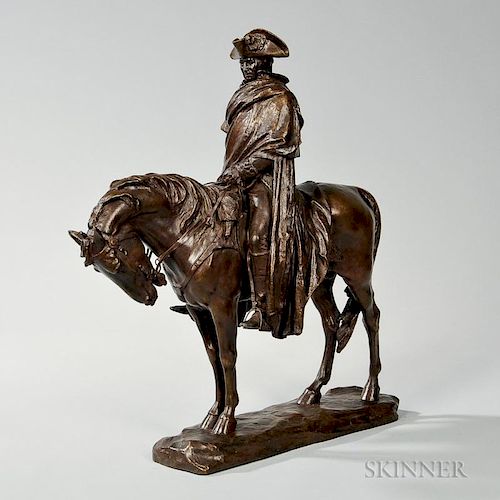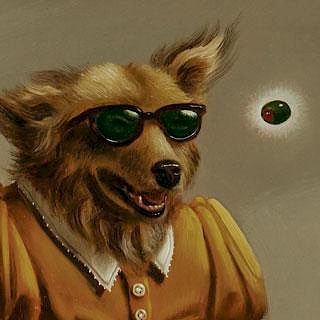Henry Merwin Shrady (American, 1871-1922) George Washington at Valley Forge
Lot 277
About Seller
Bonhams Skinner
274 Cedar Hill Street
Marlborough, MA 01752
United States
Founded over four decades ago, Bonhams Skinner offers more than 60 auctions annually. Bonhams Skinner auctions reach an international audience and showcase the unique, rare, and beautiful in dozens of categories, including the fine and decorative arts, jewelry, modern design, musical instruments, sc...Read more
Categories
Estimate:
$2,000 - $4,000
Absentee vs Live bid
Two ways to bid:
- Leave a max absentee bid and the platform will bid on your behalf up to your maximum bid during the live auction.
- Bid live during the auction and your bids will be submitted real-time to the auctioneer.
Bid Increments
| Price | Bid Increment |
|---|---|
| $0 | $10 |
| $100 | $25 |
| $500 | $50 |
| $1,000 | $100 |
| $3,000 | $250 |
| $5,000 | $500 |
| $10,000 | $1,000 |
| $30,000 | $2,500 |
| $50,000 | $5,000 |
| $100,000 | $10,000 |
| $300,000 | $25,000 |
| $500,000 | $50,000 |
| $1,000,000 | $100,000 |
About Auction
By Bonhams Skinner
Sep 27, 2017 - Sep 28, 2017
Set Reminder
2017-09-27 16:00:00
2017-09-28 16:00:00
America/New_York
Bidsquare
Bidsquare : Fine Paintings & Sculpture
https://www.bidsquare.com/auctions/skinner/fine-paintings-sculpture-2653
Bonhams Skinner bidsquare@bonhamsskinner.com
Bonhams Skinner bidsquare@bonhamsskinner.com
- Lot Description
Henry Merwin Shrady (American, 1871-1922)
George Washington at Valley Forge
Signed "H.M/ SHRADY" in the bronze on the top of the base near the horse's rear hooves, incised "ROMAN BRONZE WORKS N-Y-" along the left side bottom edge of the base.
Bronze with brown patina, height 25 in. (63.5 cm).
Condition: Small ring on the bit missing causing one piece of rein to be loose, right stirrup loose, dust and dirt to interstices.
N.B. Henry M. Shrady was a self-taught sculptor. He began his artistic pursuits as a young man and recent graduate of Columbia University (1894) by sketching animals at the Bronx Zoo. His early sculptures displayed his talent for observing and rendering detail, catching the eye of Theodore B. Starr, a New York jeweler, who encouraged the artist to produce small animal statuettes to be cast and sold in his Fifth Avenue gallery. These small bronzes attracted the attention of Karl Bitter, director of sculpture for the Pan American Exposition (Buffalo, 1901), who invited Shrady to enlarge some models for the fairgrounds. Pleased with the opportunity but at a loss with no formal training, Shrady accepted Bitter's offer to use his Weehawken studio and enjoyed a few weeks of technical instruction from the Vienesse-trained Bitter. That same year, Shrady won the competition for an equestrian statue of George Washington, which was installed at the Continental Army Plaza in Brooklyn and dedicated in 1906.
Shrady had entered the competition for the George Washington sculpture at the suggestion of a member of the selection committee who had seen his small bronze The Empty Saddle at Theodore B. Starr's showroom. Shrady chose to depict Washington as Commander-in-Chief of the Continental Army during the difficult winter of 1777-78 at Valley Forge. Washington is presented as a strong, contemplative figure astride a horse which lowers its head against the severe weather. During the creation of the work, Shrady sought the critique of Augustus Saint-Gaudens who found the lines, sentiment, and character to be admirable. Several replicas of the final maquette were cast. Although it is not known exactly how many were made, examples may be seen in museum collections including the Metropolitan Museum of Art, the Bennington (VT) Museum, the Gilcrease Museum in Tulsa, the Henry M. Flagler Museum in Palm Beach, and the Westmoreland Museum of American Art in Greensburg, Pennsylvania. Shrady was later commissioned to make a replica of the monument for Kansas City, Missouri, which was dedicated posthumously in 1925.
Shrady's next major commission was from the United States Congress for a statue of Ulysses S. Grant, with Shrady's proposal being selected from among twenty-three submissions in a national competition, judged by a distinguished panel including Augustus Saint-Gaudens, Daniel Chester French, and Charles F. McKim. Although he completed other works in the interim, Shrady worked on the Grant project for over twenty years. The Ulysses S. Grant Memorial was finally unveiled at the foot of Capitol Hill on the Washington Mall on April 27, 1922, the 100th anniversary of Grant's birth and two weeks after Shrady's death.
Information for this N.B. was drawn from American Sculpture in the Metropolitan Museum of Art, Vol. 2, Thayer Tolles, editor (New York: The Metropolitan Museum of Art, 2001), p. 544-548.
Estimate $2,000-4,000
The absence of a condition statement does not imply that the lot is in perfect condition or completely free from wear and tear, imperfections or the effects of aging. Condition requests can be obtained via email (lot inquiry button) or by telephone to the appropriate gallery location (Boston/617.350.5400 or Marlborough/508.970.3000). Any condition statement given, as a courtesy to a client, is only an opinion and should not be treated as a statement of fact. Skinner Inc. shall have no responsibility for any error or omission. - Shipping Info
-
Please visit http://www.skinnerinc.com/services/payment-and-shipping/ for information regarding the collection of items purchased at auction.
-
- Buyer's Premium



 EUR
EUR CAD
CAD AUD
AUD GBP
GBP MXN
MXN HKD
HKD CNY
CNY MYR
MYR SEK
SEK SGD
SGD CHF
CHF THB
THB











